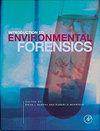从尼日利亚南部选定的高等院校视觉艺术工作室收集的室内粉尘中金属的浓度、来源和健康风险评估
IF 1.2
4区 环境科学与生态学
Q4 ENVIRONMENTAL SCIENCES
引用次数: 0
摘要
摘要:本研究提供了尼日利亚南部9所高等院校视觉艺术工作室室内粉尘中Cd、Pb、Cr、Ni、Cu、Co、Mn、Zn和Fe的浓度和职业风险数据。用王水消解粉尘样品,用原子吸收光谱法测定其金属含量。视觉艺术工作室粉尘中金属的浓度范围为未检测到(nd)至91.5 mg kg - 1 Cd、4.5至540 mg kg - 1 Pb、0.10至1100 mg kg - 1 Cr、0.50至1150 mg kg - 1 Ni、10至15600 mg kg - 1 Cu、0.5至146 mg kg - 1 Co、3.0至3680 mg kg - 1 Mn、93.5至9600 mg kg - 1 Zn和853至237,000 mg kg - 1 Fe。利用污染/污染指数、地积累指数和富集系数对粉尘颗粒的金属污染程度进行评价。这些指标表明,这些视觉艺术工作室的粉尘受到Cd、Pb、Cu和Zn的影响。与成人接触这些艺术工作室粉尘中的金属有关的危害指数(HI)和癌症风险值均在安全范围内。主成分分析表明,来自这些视觉艺术工作室的粉尘中的金属污染来源与艺术家的材料成分和车辆排放有关。本文章由计算机程序翻译,如有差异,请以英文原文为准。
Concentrations, sources, and health risk assessment of metals in indoor dust collected from visual arts studios of selected tertiary institutions in Southern Nigeria
Abstract This study provides data on the concentrations and occupational risk of Cd, Pb, Cr, Ni, Cu, Co, Mn, Zn, and Fe in indoor dust from visual arts studios of nine tertiary institutions in southern Nigeria. The dust samples were digested in aqua regia and their metal concentrations were quantified by atomic absorption spectrometry. The concentrations of metals in dust from visual arts studios ranged from not detected (nd) to 91.5 mg kg−1 Cd, 4.5 to 540 mg kg−1 Pb, 0.10 to 1,100 mg kg−1 Cr, 0.50 to 1,150 mg kg−1 Ni, 10 to 15,600 mg kg−1 Cu, 0.5 to 146 mg kg−1 Co, 3.0 to 3,680 mg kg−1 Mn, 93.5 to 9,600 mg kg−1 Zn, and 853 to 237,000 mg kg−1 Fe. The degree of contamination of the dust particles by metals was assessed by making use of the contamination/pollution index, geoaccumulation index and enrichment factor. These indices suggested that dusts from these visual arts studios were impacted with Cd, Pb, Cu, and Zn. The hazard index (HI) and cancer risk values relating to adults’ exposure to metals in dust from these arts studios were within safe limits. Principal component analysis indicated that the sources of metal contamination in dust from these visual arts studios were related to inputs from constituents of the artist’s materials and vehicular emissions.
求助全文
通过发布文献求助,成功后即可免费获取论文全文。
去求助
来源期刊

Environmental Forensics
环境科学-环境科学
CiteScore
4.90
自引率
5.60%
发文量
23
审稿时长
3 months
期刊介绍:
Environmental Forensics provides a forum for scientific investigations that address environment contamination, its sources, and the historical reconstruction of its release into the environment. The context for investigations that form the published papers in the journal are often subjects to regulatory or legal proceedings, public scrutiny, and debate. In all contexts, rigorous scientific underpinnings guide the subject investigations.
Specifically, the journal is an international, quarterly, peer-reviewed publication offering scientific studies that explore or are relevant to the source, age, fate, transport, as well as human health and ecological effects of environmental contamination. Journal subject matter encompasses all aspects of contamination mentioned above within the environmental media of air, water, soil, sediments and biota. Data evaluation and analysis approaches are highlighted as well including multivariate statistical methods. Journal focus is on scientific and technical information, data, and critical analysis in the following areas:
-Contaminant Fingerprinting for source identification and/or age-dating, including (but not limited to) chemical, isotopic, chiral, mineralogical/microscopy techniques, DNA and tree-ring fingerprinting
-Specific Evaluative Techniques for source identification and/or age-dating including (but not limited to) historical document and aerial photography review, signature chemicals, atmospheric tracers and markets forensics, background concentration evaluations.
-Statistical Evaluation, Contaminant Modeling and Data Visualization
-Vapor Intrusion including delineating the source and background values of indoor air contamination
-Integrated Case Studies, employing environmental fate techniques
-Legal Considerations, including strategic considerations for environmental fate in litigation and arbitration, and regulatory statutes and actions
 求助内容:
求助内容: 应助结果提醒方式:
应助结果提醒方式:


